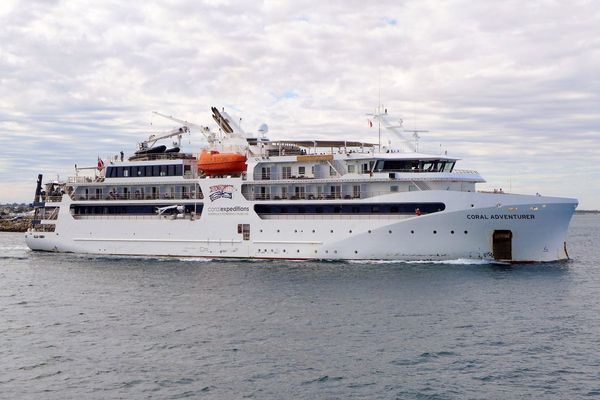Migratory birds from around the world flock to South Australia's internationally important Coorong region made famous by the movie Storm Boy.
But scientists say the River Murray flood has been "disastrous" for the region's bird species, prompting urgent calls for better management and intervention of the river system.
Nesting sites of the region's rarest and most vulnerable bird species have been flooded, while an algal bloom is also limiting the food source for migratory shorebirds that flock to the region near the Murray Mouth to feed over summer.
University of Adelaide ecologist David Paton said the impact of the flood could have been prevented.
"We're probably sitting at a third of the numbers we counted last year and that's probably more like one 10th of what it should be," Dr Paton told ABC News.
"That's a direct result of the high water.
"Very few of the birds using this Coorong are not declining and this just adds another little nail in their coffin.
"There's not enough flow coming down in all the intervening years before these big floods that then protect it a little bit from over-flooding which is happening this year."
Higher flows lead to algal bloom
Flooding from River Murray has inundated more than 3,000 homes and properties in South Australia.
It is also raising water levels in the Coorong's RAMSAR-protected wetlands and lagoons, increasing nutrients in the water and decreasing salinity.
"We've now got an algal bloom taking place here," Dr Paton said.
"This is pretty disastrous if you're a migratory shorebird because you have no mudflats in which to forage.
"The birds are now limited to the fact they've got to forage on the tops of this rather yucky-looking, filamentous green algae."
Dr Paton said there was no tracking of the birds to understand which ones had flocked to now flooded inland waterways, and which ones had just disappeared.
"We've had no egrets at all — and we've counted the southern and northern lagoons of the Coorong," Dr Paton said.
"We don't actually know where the birds are now if they're not in the Coorong.
"Species are slowly but surely dropping out of the system."
Tern for the worse
The fairy tern is one of several vulnerable bird species that rely on the Coorong.
Numbers in the Coorong's south lagoon are believed to have plummeted from 1,500 in the 1990s to about 300 today.
Its usual nesting sites are underwater and ecologists have only managed to find one nest this year in the south lagoon, with the eggs at risk of flooding.
Ecologist Fiona Paton – David's daughter – said she did not believe many, if any, fairy tern chicks would hatch this season.
"A change of direction of wind or storms or an increase in the water level will be enough to flood these [eggs]," she said.
"At the same time, any decrease in water levels is also a risk because it will reconnect to the mainland and then foxes will be able to come out and predate the eggs or chicks at that stage."
Swansong for sea grasses?
But like any natural event, there are winners and losers.
Pelicans and swans are expected to thrive with the higher waters.
Estuarine ecologist Faith Coleman said sea grasses – including a stonewort unique to the Coorong – were also thriving.
Dr Coleman has been monitoring the aquatic life in the nearby Salt Creek, which flows into the south lagoon.
"What we're really hoping is that with the fresher water out in the south lagoon we'll be able to get some of the plants and the propagation material from these plants flushing out into the south lagoon and colonising out there," she told ABC News.
"The south lagoon has, by the government's own scientists, been condemned as being in the worst state it's ever been.
"The best description varies from a chocolate milkshake to a lime cordial — the bottom of it is completely bare.
"So this is a once-in-a-lifetime opportunity to see whether [the south lagoon] responds and whether it recovers, and from a purely estuarine ecological point of view, it's a huge experiment."
She said decades ago the south lagoon had 13 or 14 species of underwater plants that covered the entire area like "one giant green, shag pile carpet".
But Dr Coleman said intervention would likely be needed involving a team of specialist and varied scientists to restore the lagoon's health.
"If we just rely on this one flood to restore it, we'll be wasting an opportunity," she said.
"The [stonewort] species as a whole is quite prone to dying out due to nutrient enrichment.
"We had one of the largest populations here up until the 1970s or 1980s … and to be able to restore that would be really, really cool."






